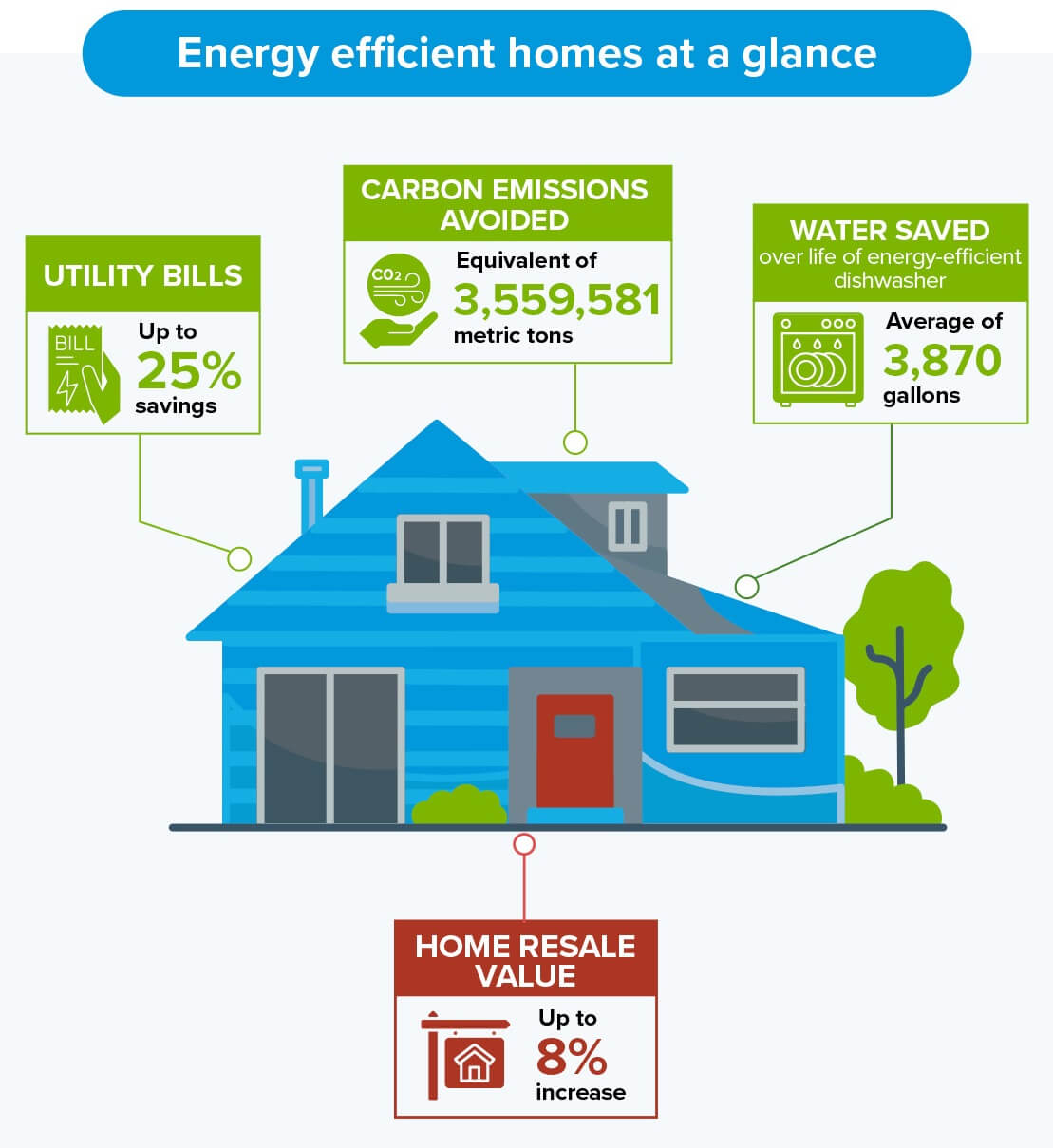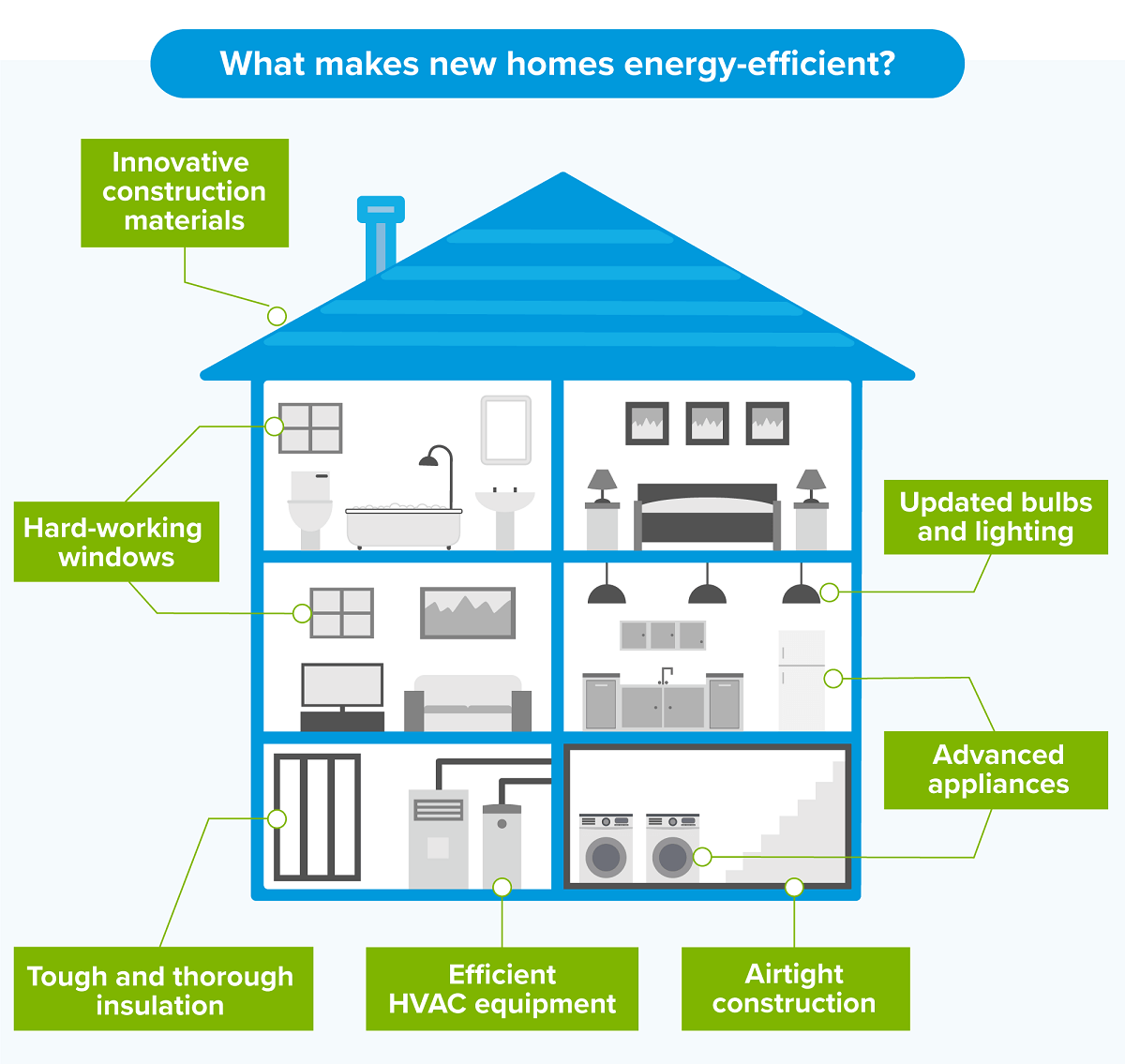Benefits of a high efficiency home

The economics of high efficiency homes is one of their strongest selling points. While it may cost you
half a percent more or so to build, the resale value added has been shown to reach as high as 8%, more than making up for the slightly higher upfront cost.
And that’s not even factoring in the energy bill savings you can enjoy year in and year out, as your energy efficient appliances and better construction materials make it possible to power and air condition the home with less electricity.
Exactly how much can you save on utilities? While there are many elements that determine your specific figure, consider that simply by installing low-E windows instead of traditional double-paned windows,
you could save $400 per year. That’s with a single efficiency improvement!
Of course, the sustainability factor of these homes can’t be overlooked, nor can the added comfort and peace of mind.
How are savings realized in an energy efficient home?

Whatever lightens the load of your appliances will make a difference in the energy efficiency your home is able to achieve.
If you can run your air conditioner less because the cooled air isn’t escaping or hot air from outside pouring in, you’ve got efficiency gain. If your water heater can heat up faster without having to run a bunch of water first, there are more gains. If your appliances are designed from the start with efficiency in mind, still more gains.
While each of these components can work on their own, when you have them all working in tandem, that’s when you really begin to see dramatic improvement. And that’s what we call a high efficiency home.
What are ENERGY STAR homes?
An easy way to recognize a high efficiency home is if it’s ENERGY STAR-certified. This means it has been built to standards set by the Environmental Protection Agency and Department of Energy for homes in the ENERGY STAR energy efficiency program. Specifically, the house is at a minimum 10% more efficient than homes built only to code.
To become certified, builders may use a combination of custom measures to reach the benchmark efficiency score, which is called the “reference design home.” Home efficiency raters use the Energy Rating Index (ERI) to measure a home’s energy efficiency, which is similar to the nationally recognized Home Energy Rating System (HERS) administered by the industry group the Residential Energy Services Network (RESNET).
Under the HERS Index, raters will give a new home a score from 0 to 150+, with 100 being the same as a reference home built to code. The lower the HERS score, the more efficient the house.
Are you a homebuilder?
If you are a homebuilder looking to get involved with high efficiency homes, please visit the CenterPoint Energy High Efficiency HomesTM program for builders page to apply, see eligibility criteria and explore benefits, including:
- Cash incentives
- Energy efficiency technical assistance
- Energy efficiency training for the builder's sales and operations teams
- Energy efficiency marketing support through our advertising and marketing materials
